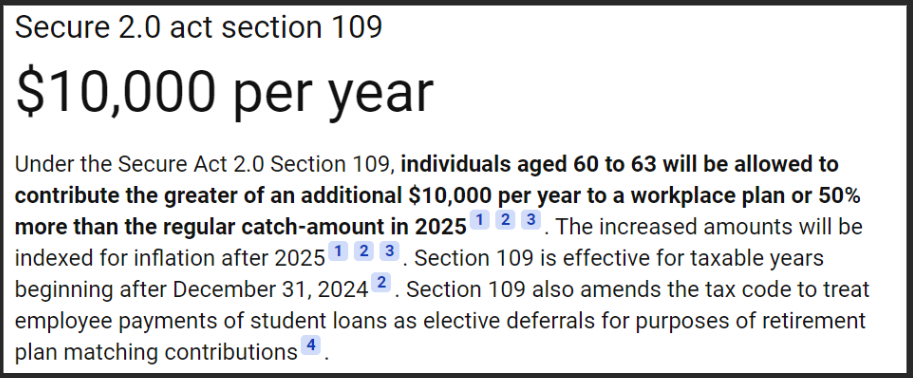Please see attached for a list of 2024 Payroll tax updates. Please note that some changes may require an action to be utilized. They will be flagged with a Y in Action Required column.
Update: April 25, 2024
Canada
Federal Employment Insurance Tax – Effective 4/25/2024
A new field, Custom Employment Insurance tax rate, has been added to Tax Maintenance ~ Company Tax and to Employee Payroll Settings ~ Tax Settings to support EI Premium Reduction Program.
Optional: Employers that qualify can use this field to add the lower tax rate to be applied to the employer portion of the tax.
United States
Washington Paid Medical and Family Leave- Effective 4/25/2024
Corrected an issue where the taxable wage for Washington PFML was doubling on Government Reporting using the WA PMFL Form.
Update: April 5, 2024
United States – HSA – Action Required – Effective 3/19/24
The Federal HSA family contribution limit has changed from $8350 to $8300.
ACTION REQUIRED: Review employee HSA family contributions that may have exceeded the $8300 limit.
Alabama – Income Tax – Effective 1/1/24
Overtime wages earned in Washington DC by an Alabama resident are exempt from income tax.
Indiana – Income Tax – Effective 1/1/24
REVERTED: “Indiana will tax residents fully and will not provide credit for wages earned in another state.”
Indiana will continue to provide a tax credit for the tax paid to another state.
Iowa – Income Tax – Effective 2/23/24
The 2023 IA W-4 form and prior can still use the total allowances field. The engine will take the number of allowances and multiply by 40.
NOTE: Filing status is no longer used or supported. It was never used to calculate Iowa Income Tax.
Kentucky City, County or OLF – Action Required – Effective 3/8/2024
Corrected an issue where the subject wages could potentially exceed the wage base when the following conditions were all met:
1. The tax being calculated is a percentage-based Kentucky city or county OLF with a wage base
2. Both regular and supplemental wages have been set up.
3. The combined regular and supplemental wages are currently crossing the wage base
ACTION REQUIRED: Review Kentucky local taxable wages and taxable gross and adjust for any employee that may have been exposed to this issue.
Kentucky Campbell County Senior Citizen Tax – Effective 1/1/24
Corrected an issue that caused this tax to be missing from paychecks.
Kentucky Middlesboro OLF – Effective 4/1/24
The rate increased from 2% to 2.45%.
Kentucky West Buechel OLF – Action Required – Effective 1/1/24
Correction: The wage base does not have a limit. However, only $50,000 in tax can be collected.
ACTION REQUIRED: Review any employees in this local that may have exceeded $50,000 taxable wages and make corrections.
Ohio Lebanon-Turtlecreek Township JEDD – Effectve 1/1/24
The rate increased from 1% to 1.5%.
Ohio Oakwood (Montgomery County) City – Effective 1/1/16
The tax credit decreased from 100% to 90% and the credit limit decreased from 2.5% to 2.25%.
Ohio Violet Township - City of Lancaster JEDD – Effective 1/1/24
Added with a rate of 2.3%.
Oklahoma Technology Fund Surcharge - Effective 11/1/23
The Oklahoma Technology Fund Surcharge reactivated, after previously expiring on December 31, 2022.
Effective 1 November 2023, wage base is $25,700.
Effective 1 January 2024, wage base is $27,000.
The tax is 5% of the employer's assigned unemployment rate. This tax is currently be collected with Oklahoma Unemployment Tax
Oregon Quarterly Tax Report (OQ) – Action Required - Effective 1/1/24
Oregon Quarterly Tax Report (OQ) showed the incorrect amounts for Taxable wages for Family Leave Insurance. The report has been corrected so that the correct amount displays.
ACTION REQUIRED: Review Quarter 1 2024 reports to ensure that the correct taxable wages show for Family Leave Insurance (FLI).
NOTE: As of January 1, 2024, FLI no longer follows Unemployment taxable wages but instead follows the Social Security Wage base.
Pennsylvania FSA – Effective 1/1/23
The taxability of Dependent Care FSA benefits has been updated for Pennsylvania State Tax. Both Employee and employer contributions are no longer subject to withholding tax.
Pennsylvania Homestead LST - Effective 1/1/24
The total LST amount increased from $40 to $52.









